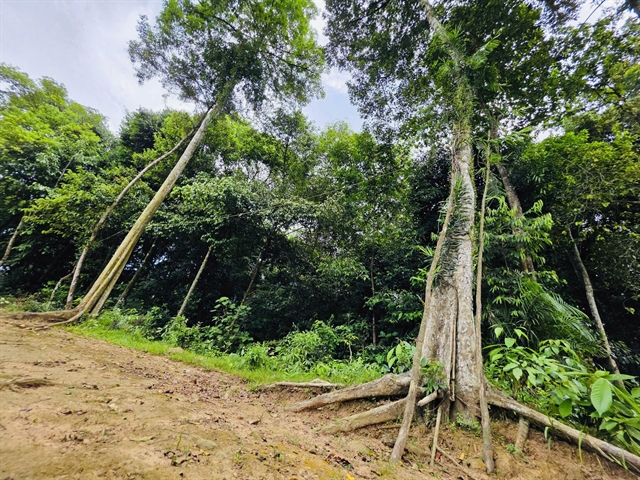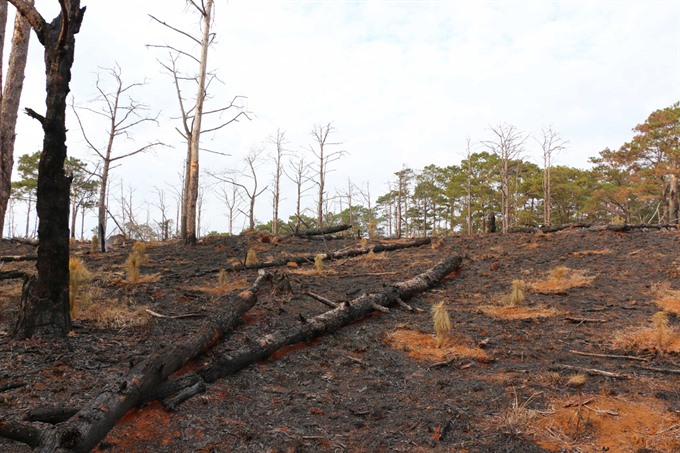 Environment
Environment

Despite positive reports from authorities on the steady increase of the national forest cover, the size of the country’s protected forest is in fact decreasing at an alarming rate, experts said.
 |
| Pine trees in the protected forest in Hồ Chí Minh Highway in Đắk Song District, in the Central Highlands province of Đắk Nông, are illegally chopped down. — VNA/VNS Photo Hưng Thịnh |
HÀ NỘI — Despite positive reports from authorities on the steady increase of the national forest cover, the size of the country’s protected forest is in fact decreasing at an alarming rate, experts said.
During a workshop on Thursday on the survival of protected forest, which plays a key role in mitigating the risks of landslide and flash flood in mountainous areas, Nguyễn Hải Vân of the Centre for People and Nature (PanNature) announced that Việt Nam lost 1.7 million ha of protected forest from 2004 to 2014, 170,000 ha a year on average. The deforestation has left the country with only about 4.5 million ha of protected forest.
Such severe deforestation is often dismissed in the annual forest reports by the Administration of Forestry (AoF), as it focuses more on the total amount of forest cover. According to the AoF, Việt
Natural forest, which has much higher biodiversity than planted forest and makes up a major part of the country’s protected forests, suffered the heaviest loss with 1.43 million ha disappearing nationwide. It alone accounted for 84.1 per cent of the total protected forest damaged, Vân said.
“The deforestation occurred not just in certain areas but across wider regions, with hot spots in the northwest, Central Highlands and the south-central regions,” she said.
“The deforestation happened so fast that 59 management boards of protected forest had to reduce their forest statistics 118 times over the last ten years.”
The adjustments were made after protected forest areas were converted to production forests or were chopped down to make space for building new hydropower plants or mining minerals, Vân said.
“The loss of natural forest partly explains why natural disasters of late have caused such devastating consequences,” she added.
Limited force
Mai Văn Đảm, deputy head of the Thạch Thành protection forest management board in
A management board usually must cover a very large forest area, ranging between 5,000 and 10,000 ha, but is assigned only 10 people to do the job.
Đảm said that his board was forced to sign contracts with another 10 workers, but even that means one person must look after 250 to 500 ha by himself.
“The budget for the unit is also very limited, so that the monthly wage can only be at VNĐ2.5-3 million (US$110-130), even though we must work very hard in the forests and mountains,” he said.
Nguyễn Tuấn Hưng from the AoF’s Department of Special Use Forest and Protected Forest Management said that Việt Nam planned to raise the amount of protected forest to 5.68 million ha by 2020, citing the country’s forestry development strategy. Việt
“Without more aggressive measures to guard the forest, it is almost impossible to meet this goal,” Hưng said. — VNS




